Zihao Yin
Continual Learning for Steganalysis
Sep 03, 2022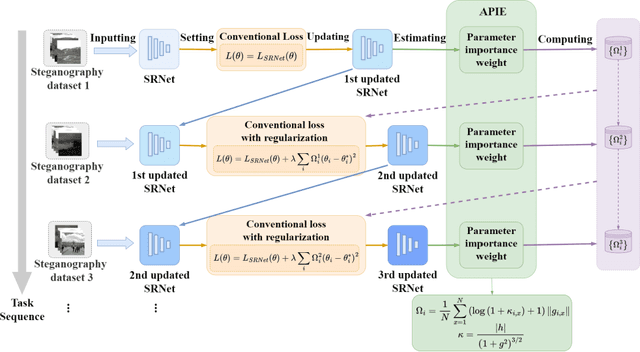
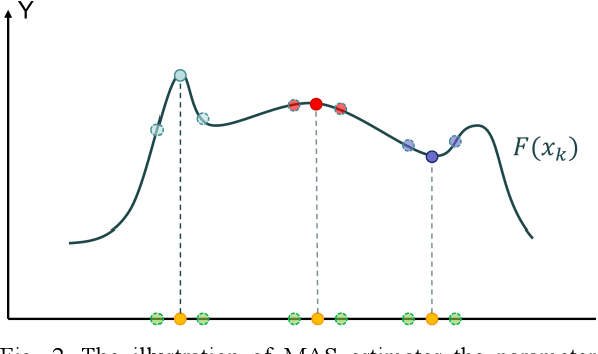
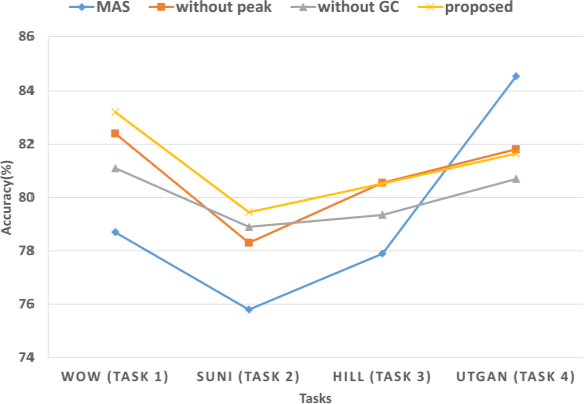
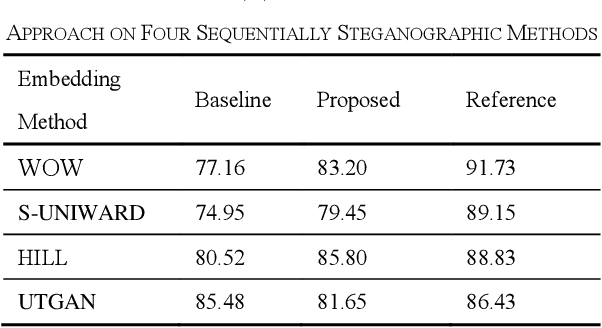
Abstract:To detect the existing steganographic algorithms, recent steganalysis methods usually train a Convolutional Neural Network (CNN) model on the dataset consisting of corresponding paired cover/stego-images. However, it is inefficient and impractical for those steganalysis tools to completely retrain the CNN model to make it effective against both the existing steganographic algorithms and a new emerging steganographic algorithm. Thus, existing steganalysis models usually lack dynamic extensibility for new steganographic algorithms, which limits their application in real-world scenarios. To address this issue, we propose an accurate parameter importance estimation (APIE) based-continual learning scheme for steganalysis. In this scheme, when a steganalysis model is trained on the new image dataset generated by the new steganographic algorithm, its network parameters are effectively and efficiently updated with sufficient consideration of their importance evaluated in the previous training process. This approach can guide the steganalysis model to learn the patterns of the new steganographic algorithm without significantly degrading the detectability against the previous steganographic algorithms. Experimental results demonstrate the proposed scheme has promising extensibility for new emerging steganographic algorithms.
One-Shot Medical Landmark Localization by Edge-Guided Transform and Noisy Landmark Refinement
Jul 31, 2022

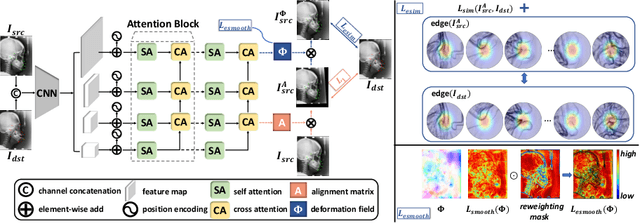

Abstract:As an important upstream task for many medical applications, supervised landmark localization still requires non-negligible annotation costs to achieve desirable performance. Besides, due to cumbersome collection procedures, the limited size of medical landmark datasets impacts the effectiveness of large-scale self-supervised pre-training methods. To address these challenges, we propose a two-stage framework for one-shot medical landmark localization, which first infers landmarks by unsupervised registration from the labeled exemplar to unlabeled targets, and then utilizes these noisy pseudo labels to train robust detectors. To handle the significant structure variations, we learn an end-to-end cascade of global alignment and local deformations, under the guidance of novel loss functions which incorporate edge information. In stage II, we explore self-consistency for selecting reliable pseudo labels and cross-consistency for semi-supervised learning. Our method achieves state-of-the-art performances on public datasets of different body parts, which demonstrates its general applicability.
Transformers in Medical Image Analysis: A Review
Feb 24, 2022
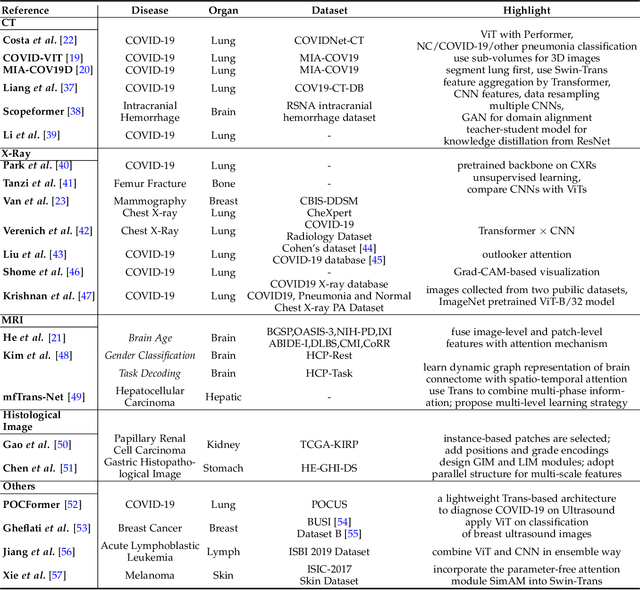
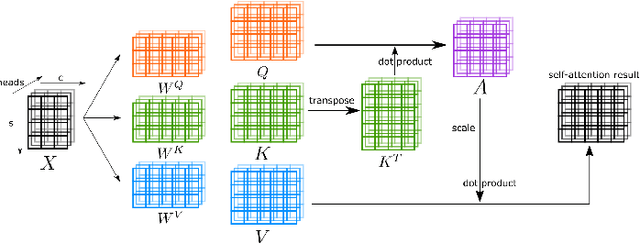
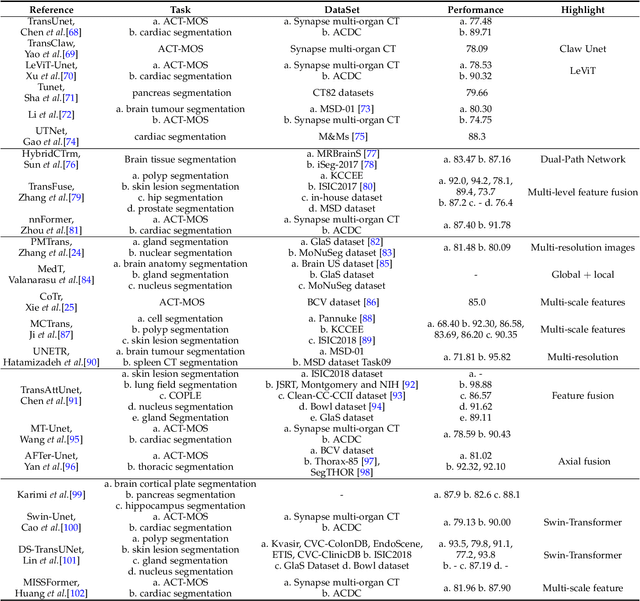
Abstract:Transformers have dominated the field of natural language processing, and recently impacted the computer vision area. In the field of medical image analysis, Transformers have also been successfully applied to full-stack clinical applications, including image synthesis/reconstruction, registration, segmentation, detection, and diagnosis. Our paper presents both a position paper and a primer, promoting awareness and application of Transformers in the field of medical image analysis. Specifically, we first overview the core concepts of the attention mechanism built into Transformers and other basic components. Second, we give a new taxonomy of various Transformer architectures tailored for medical image applications and discuss their limitations. Within this review, we investigate key challenges revolving around the use of Transformers in different learning paradigms, improving the model efficiency, and their coupling with other techniques. We hope this review can give a comprehensive picture of Transformers to the readers in the field of medical image analysis.
 Add to Chrome
Add to Chrome Add to Firefox
Add to Firefox Add to Edge
Add to Edge